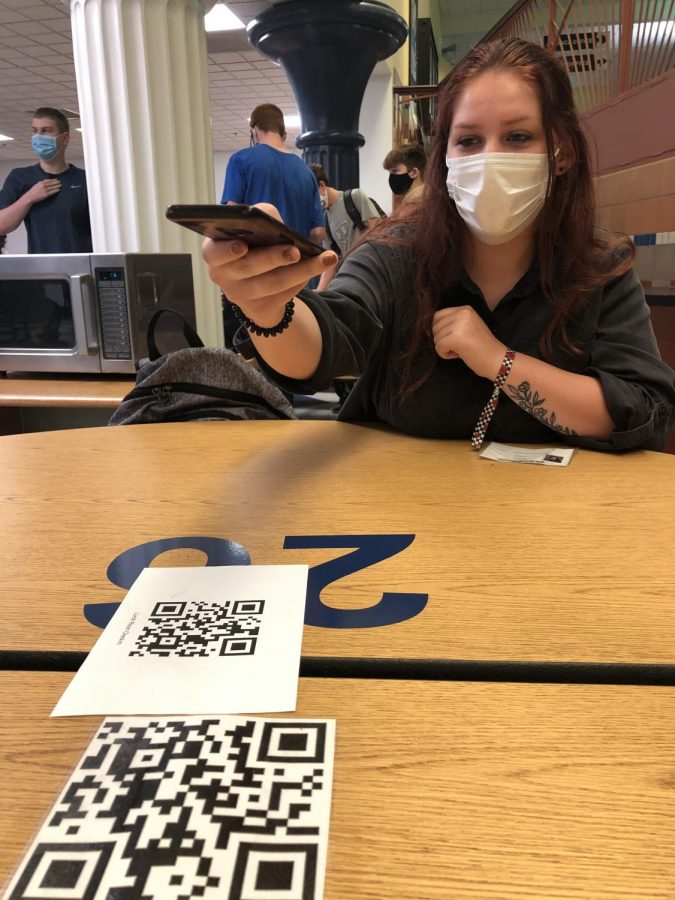Scanning In
Effects and ideas behind In-person students using QR codes for lunch and for self-checks
TABLE 26. During the school day of September 10th, Senior Madalynn Turner scans the QR code to sign into lunch. Due to COVID, students sign into lunch to mark where they sit for the day.
While many students this school year are fully virtual, that doesn’t mean in-person students haven’t incorporated a fair amount of technology into their daily schedules. This includes the daily self check-ins and a lunch seating sign in, both of these originally were running differently from how they are now and are a prime example of how much COVID-19 procedures are affecting even small parts of the day. The morning self-checks administered and monitored by Assistant Principal’s secretary Amy Stendal were sent through email and now are done through a QR code in each classroom.
“We switched to the QR code because we were having Internet problems in the office in the beginning so getting those emails out every morning in a timely manner was a lot of work,” Stendal said.
Even though no longer presented by email each morning, the link still does work and generally just wasn’t efficient to push out everyday, but still connects.
“You can still use the link, because it will lead you to the same form,” Stendal said, “it’s just a different way so students didn’t have to wait for that email every morning.”
As for lunch, the initial plan was to just stick to assigned seats after a certain amount of time. Now the use of QR codes at tables has allowed students a little more flexibility without losing the extra safety measures.
“We were looking for a way we could track students and where they sat that day, because we are responsible for doing contact tracing if there is a case of COVID,” Assistant Principal Jeff Thorne said.
As with any new system or precaution such as this, there are bound to be technical difficulties in some format and it has been relatively difficult for some students both at lunch and throughout the building to load or open the form.
“I had a friend who had to go and tell Happel or whoever was at lunch that they had sat there with their phone open the entire time and it never loaded,” senior Sophie Gibbs said.
Even this year with the lower commons having tables, it’s the things that wouldn’t typically be thought of that are still being rearranged and fixed.
“We have run into some issues with some kid’s connectivity,” Thorne said. “We originally went with the laminated copy on the table and just because of the reflections and the lights and things like that it ran into some issues with people not being able to scan on their phone.”
While everyone is still working out the issues, it seems to be a slight concern for students who don’t have a phone. Before this year it wasn’t a common situation to have to figure out how to do it on your chromebook and then bring it to lunch with you so it’s still a time of testing and adjusting for everyone.
“With the chromebook it’s not that difficult if you bring it, you can go and search your QR reader with a webcam and a lot of kids are just saving that link to open it up,” Thorne said.
No matter whether it is a good or bad plan, looking at the main reason lunch seating was changed was to benefit the students and try to put a little more choice back in their day.
“The thought behind the QR code was to give flexibility to be able to move,” Thorne said, “and for us to still be able to contact trace kids if we have to.”



